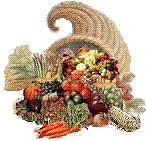
Return
you came from
FOOD SAFETY FOR HIKERS AND CAMPERS
Don't end your day in the woods with food poisoning! We always have to balance food costs and food weights without neglecting food safety. With our 21st century increase in contamination of fresh food sources, some of our customary camping habits are no longer safe or reliable. Nature lovers who plan well carefully can use fresh foods for meals the first day, especially if they drive to their campsites with coolers, and have access to grills.
Planning menus with food safety in mind
Fresh foods for day one:
If you pack carefully it is possible to use fresh foods for meals the first day. Many campers drive to their campsites with coolers, and have access to grills. Raw meat, poultry, fish, most dairy products, eggs (even hard-cooked eggs) and prepared foods should be stored cold, that is, at 40 degrees F or colder, and should not be left unrefrigerated for more than two hours . Foods can be prepared in advance, refrigerated or frozen, and packed with a cold source. Freeze water in a plastic jug and wrap it with the frozen foods in a plastic bag, then stuff the bag inside a sleeping bag in your backpack. This way the food will be kept cold while you hike.
After the first 24 hours:
After the first day, many backpackers depend on foods that do not require refrigeration. Canned meat, poultry, and fish-although heavy-are reliable choices. Other foods that do not require refrigeration: peanut butter and jelly; hard cheeses; unmoldy dried meats, fruits, and nuts; dried noodles and soups; breads and crackers; powdered milk and powdered fruit drinks. The tetrapak milk, juices and vegetables are also safe.
For dried foods, you can find a wide range of specially packaged dried foods in outdoor supply stores and catalogues, but there are many suitable foods in traditional grocery stores.
Safe Drinking Water:
Safe water is a continuous concern in the outdoors. If uncertain of sources, carry it in. Always assume that stream and river waters are not safe to drink or wash dishes; they may contain bacteria that could cause illness if the water is not purified before drinking. Decontamination methods do NOT remove toxic chemicals. Besides drinking and cooking, remember to use boiled or disinfected water to brush teeth. You'll need it for preparing foods as well as for washing up dishes and your hands and face. Purchase purification tablets or equipment from camping supply stores, and learn purification techniques. Florida Agricultural Extension recommends you can make unknown water bacterially safe to drink by one of the following three methods. Remember, these decontamination methods do NOT remove toxic chemicals or parasites, both real threats in the out of doors.
- Boil water for about five minutes in a clean container. Water must be at a rolling or vigorous boil for at least three minutes.
- Mix one-half (1/2) teaspoon of liquid, unscented chlorine laundry bleach, such as Clorox or Purex, with two-and-one-half (2-1/2) gallons of clear water in a clean non-aluminum container, and let stand for at least 30 minutes before drinking.
- Add two (2) drops of tincture of iodine solution to one (1) quart clear water. After mixing thoroughly, allow to stand for at least 30 minutes before drinking. Do NOT use this method for pregnant or nursing women, infants and children, or anyone with thyroid conditions.
Keeping Safe by Cleaning UP:
Cleanliness is essential. Pack soap for hand washing and dishwashing. You can also use waterless disinfectants or disposable wipes to clean your hands when working with foods or after bathroom trips. But remember: disposable doesn't mean leaving it behind to pollute the outdoors; burn it or carry it out with you. And don't just piddle in the bushes: all body wastes MUST be buried.
Kids Like the Woods, Too!
If you want to go backpacking with an infant, breastfeeding is a handy choice; handy, sterile formula in travel-proof containers! If you have a bottle-feeding infant, carry pre-measured packets of powdered infant formula as well as bottled water, and prepare only one bottle at a time. If you carry prepared bottles they must be kept cold. With bottled water, it is not necessary to boil it before mixing with formula. As for baby food, bring the smallest size jars. Dispose of any leftover baby food or formula after each single feeding. Toddlers and small children can use powdered milk. Ellen's note: be sure you have introduced it at home previously, perhaps as "camping milk" or "forest milk".
For more information, call USDA's meat and Poultry Hotline, 1-800-535-4555. Source: USDA Release No. 0536.94
